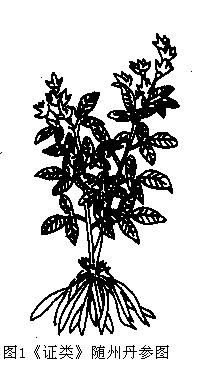| title | Salvia |
| release time | 2006/3/10 |
| source | Jade Knock Studio |
Today, Salvia is used as the dried root and rhizome of the Salvia miltiorrhiza Bge., a plant from the Lamiaceae family. This product is distributed across most regions of the country, with wild varieties mainly produced in North and East China, particularly in Shandong, where the output from Laiwu and Mengshan is significant. Cultivated varieties are of high quality and quantity in Sichuan, ranking first nationwide, with Zhongjiang County being the top producer, having a long cultivation history. Additionally, Sichuan's Jintang, Deyang, Zitong, Changshou, Kaixian, Leshan, Long'an, and Pingwu also cultivate this plant.
Materia medica research suggests that the medicinal varieties of Salvia have not changed much from ancient times to the present, with Salvia miltiorrhiza being the mainstream medicinal variety throughout history. Today, authentic Salvia is widely distributed, with no strong regional specificity. However, historical records from Suizhou in Hubei and Zhongjiang in Sichuan can serve as references for GAP base construction.
bubble_chart Variety verification
Salvia is recorded in the Bencao Jing, also known as Xichan grass, and in the Guangya as "Haocan, Salvia." It is named for its red roots, hence also called "Chishen" in Bielu. The Wupu describes its morphology: "Stems and leaves minor formula, like Perilla with hair, roots red, flowers purple in April, roots collected and dried in the shade in March and May." Perilla refers to white perilla, and Tao Hongjing also mentioned: "Square stems with hair, purple flowers, commonly called Zhuma." According to these descriptions, it is indeed a plant of the Salvia genus in the Lamiaceae family.

From the historical records of materia medica, the variety of Salvia has not changed much from ancient times to the present. It should be noted that the Jiuhuang Bencao's entry on Gegongcai states: "Grows in the valleys of Shaohua Mountain in Mixian County. Plants two to three feet tall, stems square, concave with four edges, opposite branches, leaves also opposite, like cultivated purple perilla fruit leaves but smaller, also like Perilla leaves but larger, with pink Carthamus flowers in between, seeds like foxtail millet grains and tea-brown in color. Taste sweet, slightly bitter." The Zhiwu Mingshi Tukao, Volume 5, quotes this entry, and the medicinal illustration is similar. Mr. Wang Zuobin's "Botanical Names of Jiuhuang Bencao and 'Wild Vegetable Recipes' in 'Nongzheng Quanshu'" identifies Gegongcai as authentic Salvia, which may be incorrect. Salvia has 3-7 leaflets, usually 5, as Li Shizhen mentioned "one branch with five leaves," whereas this has 3 leaflets, and Salvia has purple-blue flowers, different from the pink Carthamus mentioned here. However, considering Gegongcai as a plant of the Salvia genus in the Lamiaceae family is roughly correct.
bubble_chart Local HistoryThe Bencao Jing and Bielu record that Salvia originates from "the Tongbai Mountain valley and Mount Tai." Tao Hong-jing notes: "This Tongbai Mountain is the source of the Huai River, located in Yiyang, not the Tongbai near the East Sea. Nowadays, it is found everywhere along the nearby paths."
Today, the authentic Salvia is widely distributed across various regions. The Qianjin Yifang from the Tang Dynasty mentions that Salvia was a tribute from Huazhou, which is in Shaanxi. The Shu Bencao from the Five Dynasties period mentions Salvia production in Sichuan. The Song Dynasty's "Tujing" states that "nowadays, it is found in Shaanxi, Hedong prefectures, and Suizhou." According to the medicinal illustrations, it seems that Salvia from Suizhou, Hubei, is considered authentic. The "Qiandao Lin'an Zhi" from the Song Dynasty, Volume 2, mentions that Salvia was also produced near Hangzhou during the Southern Song Dynasty.
According to the provincial records collected in the "Siku Quanshu" from the Qing Dynasty, the following local records mention Salvia production: "Qinding Shengjing Tongzhi" Volume 107, "Jifu Tongzhi" Volume 56, "Zhejiang Tongzhi" Volume 269, "Huguang Tongzhi" Volume 18, "Henan Tongzhi" Volume 29, "Shandong Tongzhi" Volume 24, "Shaanxi Tongzhi" Volume 43, and "Guizhou Tongzhi" Volume 45, indicating its widespread presence across the north and south.
The views on the authenticity of Salvia by Chen Renshan and Cao Bingzhang during the Republic of China period were in direct opposition. The "Yaowu Chuchan Bian" states: "Salvia produced in Long'an Prefecture, Sichuan, is the best, known as Chuan Salvia. Those produced in Anhui and Jiangsu are of inferior quality and taste." However, the "Zengding Weiyao Tiaobian" states: "Salvia produced in Gucheng, Anhui, with red skin, purple flesh with veins, dry and loose texture, large head without reed, is the best. Those produced in Quanjiao County, Chuzhou, are similar in shape and also of good quality. Those produced in Fengyang, Dingyuan, Baiyang Mountain, and Zhangwei have thin reeds, loose texture, and many fine branches, making them inferior. Those produced in Sichuan have small heads, thick branches, glutinous flesh with white cores, and are also inferior." The truth of these claims is subjective. According to the "Zhongjiang County Annals" from the 54th year of Qianlong (1715), Salvia was widely cultivated locally. The 19th year of the Republic of China's "Zhongjiang County Annals" states: "Salvia, with very limited uses, has been cultivated in our county for decades, especially since the initial stage of the Republic of China, starting with three to four hundred thousand catties, relying solely on foreign ships for export." This suggests that the current production advantage of Sichuan Salvia is likely related to the large-scale cultivation in the Zhongjiang area during the Qing Dynasty.




